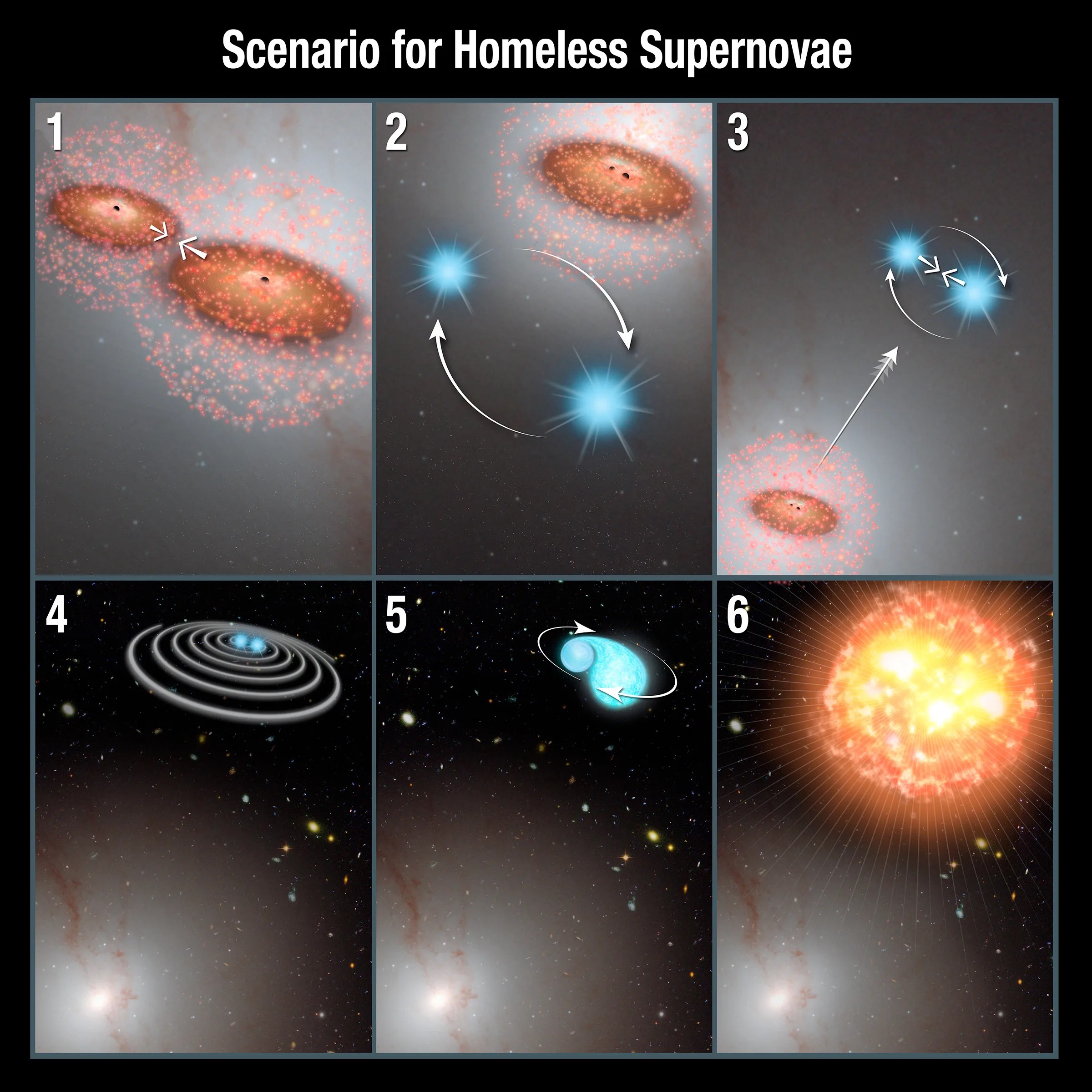
hs-2015-28-d-print
This illustration offers a plausible scenario for how vagabond stars exploded as supernovae outside the cozy confines of galaxies.1) A pair of black holes comes together during a galaxy merger, dragging with them up to a million stars each.2) A double-star system wanders too close to the two black holes.3) The black holes then gravitationally catapult the stars out of the galaxy. At the same time, the stars are brought closer together.4) After getting booted out of the galaxy, the binary stars move even closer together as orbital energy is carried away from the duo in the form of gravitational waves.5) Eventually, the stars get close enough that one of them is ripped apart by tidal forces.6) As material from the dead star is quickly dumped onto the surviving star, a supernova occurs.
